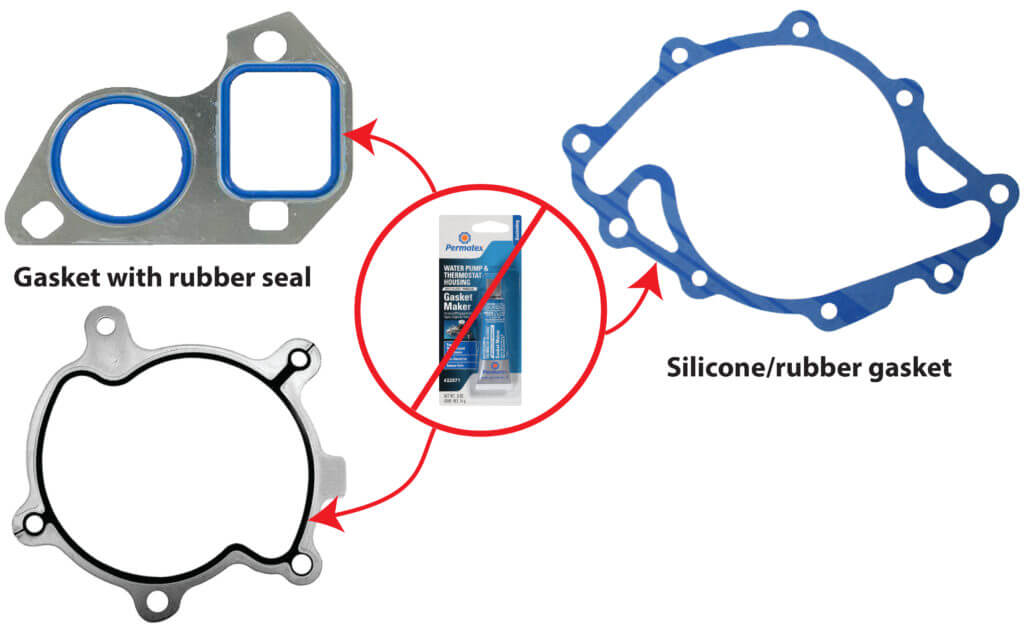How to use RTV gasket maker
Learn how to use RTV gasket maker and avoid these common mistakes
Many vehicles no longer come with cut or silicone formed gaskets. Instead they were built using room temperature vulcanizing RTV gasket maker. When it’s time to replace an RTV gasket, surface preparation and the right application method is critical to duplicating the factory seal. I’ll go over the cleaning and application requirements for how to use RTV gasket maker and wind up with a good result.
Surface preparation is critical
RTV doesn’t stick to cured RTV so removing ALL of the old stuff is critical. Failing to clean off the old gasket material is the #1 cause of future leaks, especially when using RTV as a gasket maker. If you leave any old gasket material, the new RTV won’t stick and will leak.
If you need to scrape the surface, use a plastic scraper or stiff nylon brush; never a razor blade. If you still can’t remove the old gasket maker, purchase a can of gasket remover.
Don’t RTV gasket maker on paper or cut gaskets
Unless otherwise noted in the shop manual or instructions packaged with the parts, paper and cut gaskets are usually designed to be installed DRY. In those cases where the instructions recommend a maker, use the recommended gasket treatment.
If the gasket contains a rubber bead, NEVER add any type of gasket maker. Those products will prevent a complete seal, resulting in leaks.

In cases where you need a gasket to stay in place while installing the part, use a high-tack, non-hardening product like Permatex® High Tack™ Spray-A-Gasket™ Sealant or Permatex® High Tack™ Gasket Sealant
Never use RTV gasket maker mistake on rubber or silicone gaskets
These gaskets are designed to be installed dry. Applying RTV can cause actually lubricate the gasket and cause it to “squirm” during the application, preventing proper alignment. This is a case where applying RTV can actually cause a leak, rather than prevent it.
More is not better — don’t use too much RTV
Excessive RTV application will simply cause the RTV to ooze outside the flange area. Later, as oil contacts the surfaces, that excess RTV will dislodge and cause oil gallery obstructions or clog filters or screens.
Make sure you pay attention to cure time before exposing the product to oil or fluids
Some anaerobic RTV makers are designed to be applied and set in place and then set up in place for about 1-hour before you torque to spec. Refer to the product’s instructions for recommended set-up times. In addition to set up time, many RTV materials must cure for 24-hours before being exposed to fluids.
If you need to return the vehicle to service without waiting, use an RTV material that’s specifically designed for that immediate use. One product is Permatex Right Stuff that can be used within 1 minute after application. See their site for more information.
On the flip side, never allow a solvent-based gasket maker to dry completely before installing the component and torquing to spec. Some solvent-based gasket makers will begin to “skin over” if left to dry and the skin won’t seal properly.
RTV gasket maker should never be used on an application that’s exposed to gasoline
RTV gasket materials aren’t appropriate for applications in contact with gas. Use a solvent-based product in those applications.
©, 2020 Rick Muscoplat
Posted on by Rick Muscoplat
